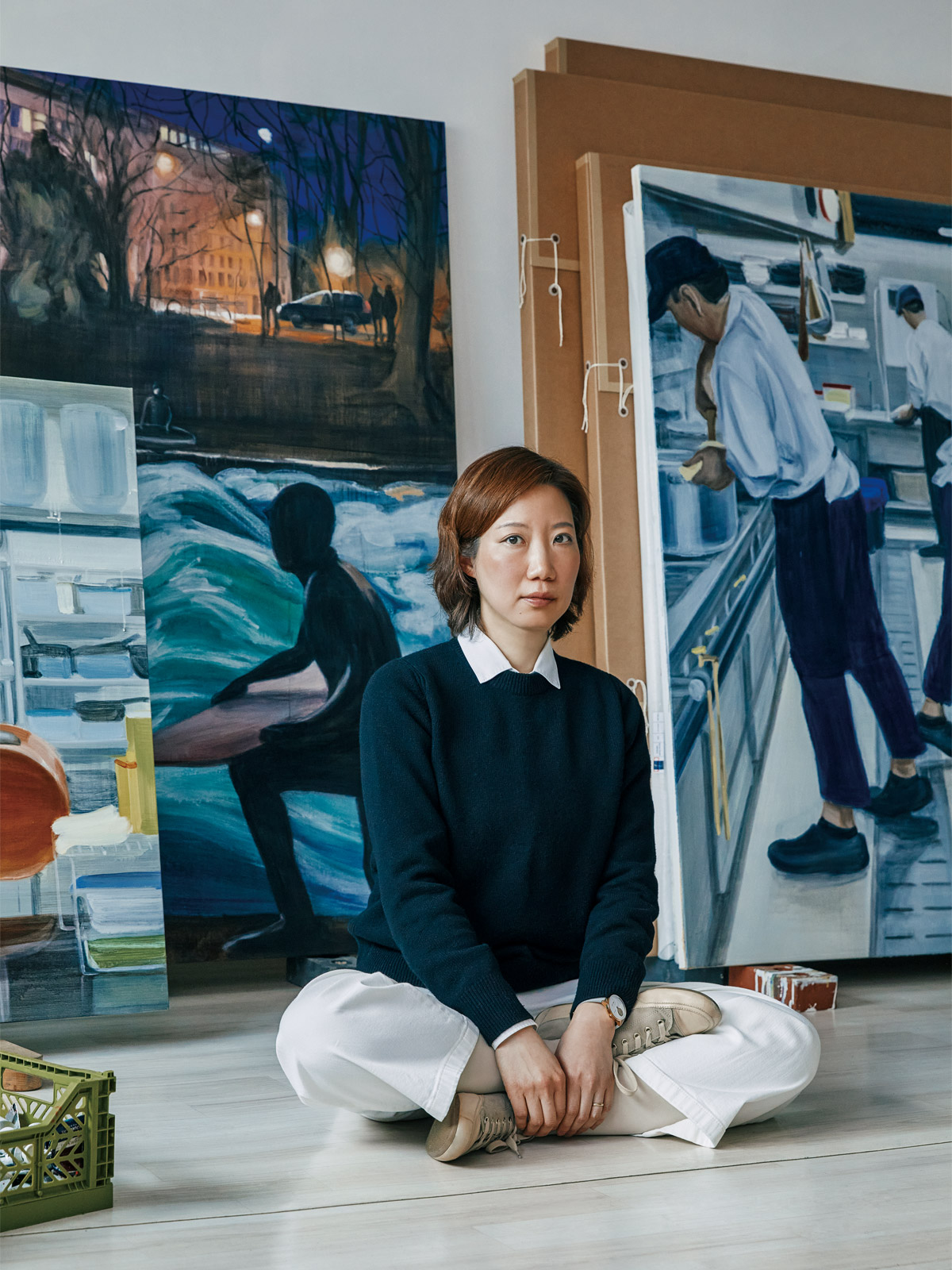Definition of Contemporary Artists
Contemporary artists are those who emerged after the 1970s and 1980s, dealing with new aesthetic issues and sensibly interpreting contemporary knowledge and truth through visual creations. They go beyond merely expressing personal emotions and thoughts; they establish these expressions objectively to complete them as artworks. Contemporary artists tend to be multi-players, utilizing various media to transcend traditional genres and incorporate new techniques. This extends beyond professional work, as they also engage in art-related fields like criticism and curating to achieve their objectives.
History of Contemporary Artists
Contemporary artists began to appear during the transformations in modern art that occurred in the late 1960s and 1970s. This period was marked by significant social and political upheaval, prompting artists to seek new forms of artistic expression.
- Before the 1960s: Art was
primarily focused on modern paradigms and aesthetic issues. However,
contemporary artists started to pursue new forms of expression that went
beyond existing trends.
- 1970s-1980s: This era saw
the emergence of new art genres such as conceptual art, performance art,
and video art, laying the foundation for contemporary art. Artists of this
period sought to transcend the limitations of traditional media,
reflecting new technologies and social issues in their works.
- 1990s onwards: With the
digital revolution and the widespread use of the internet, artists began
incorporating global cultural and political issues into their work. This
period saw the development of multimedia art and interactive art,
enhancing engagement and interaction with the audience.
Categories of Contemporary Artists
Contemporary artists can be categorized based on their themes, media, and methodologies.
1. By Theme:
- Social/Political Artists: These artists address social issues and political
topics, using art to convey critical messages. For example, Banksy uses
street art to deliver political messages.
- Social/Political Artists: These artists address social issues and political
topics, using art to convey critical messages. For example, Banksy uses
street art to deliver political messages.
- Personal/Psychological Artists: These artists explore personal emotions and
psychological states, often visualizing fundamental human feelings.
Francis Bacon is renowned for his exploration of human inner turmoil.
- Personal/Psychological Artists: These artists explore personal emotions and
psychological states, often visualizing fundamental human feelings.
Francis Bacon is renowned for his exploration of human inner turmoil.
2. By Media:
- Painting/Sculpture: Artists who work with traditional media but often reinterpret these traditions with new materials and techniques
- Video Art/Digital Art: These
artists use digital technologies and video to create their works,
emphasizing visual effects and interactivity. Bill Viola is a pioneer in
video art.
- Video Art/Digital Art: These
artists use digital technologies and video to create their works,
emphasizing visual effects and interactivity. Bill Viola is a pioneer in
video art.
- Performance Art: Artists who
use their bodies as the primary medium to create their works, focusing on
physical experience. Marina Abramović is famous for her performance art that explores
fundamental human experiences.
- Performance Art: Artists who
use their bodies as the primary medium to create their works, focusing on
physical experience. Marina Abramović is famous for her performance art that explores
fundamental human experiences.
3. By Methodology:
- Conceptual Artists: These
artists prioritize ideas and concepts over the physical form of the work,
emphasizing the message contained within the art. Sol LeWitt is a notable
conceptual artist.
- Conceptual Artists: These
artists prioritize ideas and concepts over the physical form of the work,
emphasizing the message contained within the art. Sol LeWitt is a notable
conceptual artist.
- Interactive Art: These
artists create works that are completed through audience interaction,
emphasizing participation and experience, often using digital
technologies to enhance communication.
- Interactive Art: These
artists create works that are completed through audience interaction,
emphasizing participation and experience, often using digital
technologies to enhance communication.
Roles of Contemporary Artists
Contemporary artists play various roles in interpreting and reshaping modern society and culture.
1. Social Role:
- Contemporary artists critique and explore social and political issues through their art, offering new perspectives to the public. They use art to express societal problems and advocate for change. For example, Ai Weiwei criticizes the political situation in China and raises awareness about human rights issues.
2. Cultural Role:
- These artists explore the diverse currents of contemporary civilization, interpreting them through art to provide humanistic knowledge and philosophical insights. They embrace various cultural backgrounds and reflect these in their works, highlighting the multicultural tendencies of the global society. Yayoi Kusama, for instance, transcends cultural boundaries through her unique art world.
3. Aesthetic Role:
- Artists transcend traditional aesthetics, exploring new aesthetic values and implementing them in their works. They delve into the depths of emotion and beauty through visual creations, sharing these with the public. They expand the possibilities of art through new forms of expression, exploring the essence of art.
4. Educational Role:
- o Contemporary artists stimulate public thought by offering new ideas and perspectives, fulfilling an educational role. They encourage creative thinking through art education and contribute to nurturing the next generation of artists.
Conclusion
Contemporary artists are not just individuals who express personal emotions but play significant roles in social, cultural, aesthetic, and educational contexts. They visually interpret various discourses of modern society through diverse media and methodologies, communicating with the public and advocating for change. They explore the complexity and diversity of modern society, revealing the fundamental nature of humanity and expanding the possibilities of art. Contemporary artists transcend time, creating unique artistic worlds and providing profound insights into modern society through their works.






















